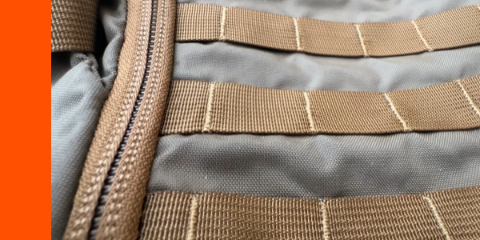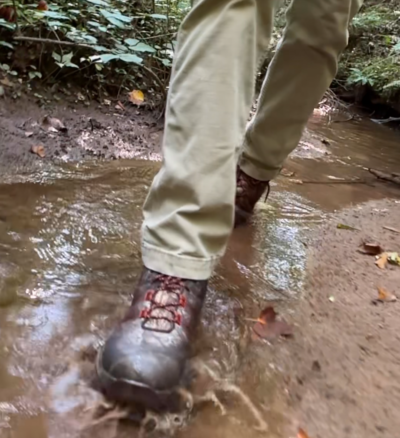I’m Josh, and I got my hands on a hunting blind made by Nukem… it’s called the Grab & Go Hunting Blind.
This blind is supposed to be more for the run and gun type hunter, which sometimes I am, and sometimes I’m not. But, I’ve got young boys that I am trying to familiarize with the turkey woods, so I was excited to see how this worked with them.
The Nukem Blind’s Ease Of Assembly

I was able to put the Nukem Grab and Go blind together very quickly (and I didn’t even read the directions!) The poles are like tent poles. They just connect together and have a bungee inside to hold them together once you get them fastened. There’s a bushing in the center on each one. There’s one along each side, and there’s one in the middle to keep it rigid.
The Nukem blind is adjustable to the height that you need it to be, based on the position you’re sitting. You can widen it out to shoot through it from a lower position. And then, if you’ve got a chair or something, you put it up higher.

This was as I was putting together the “double up” Nukem system…

There is a center piece that attaches in the middle of the two blinds to connect them… it is attached to the leafy camo cover.

Here’s a look at what the double system looks like after connecting the two blinds. My first impressions on putting it together was that I was really impressed. I love the leafy camouflage. This is the Mossy Oak Country Roots color, but there are four or five different colors that Nukem has in this blind.
I’d say the whole setup only took about three or four minutes to set up, and that was my first time ever doing it! So, I’m sure you can do this in the woods in less than a couple of minutes.

I could tell that you’d want to be able to shoot to the sides of it if you can. I can see me back here with the video camera, videoing. I’d maybe have the boys a little bit closer so they can still shoot out the side, but so they’re more concealed. But, I really liked the way it was set up.
Trying Out The Double Up System In The Woods With Kids

As you could tell, those two little boys blended in real nicely behind this blind. And I don’t believe any a wily gobbler would have been able to pick them off (as long as they sit still!)
#ad

The Nukem Hunting Blind Is Solid
If you’re like me and you got kids that you’re going to be taking hunting this Spring, or even if you’re going to be videoing and doing a lot of moving behind the blind in the turkey woods, the Nukem Hunting Blind is a great option for turkey hunters.

This Nukem Grab & Go double up system really has impressed me. I don’t know what the woods look like where you are, but here in central Georgia, the Mossy Oak country roots pattern blends in really well. I’m not sure I’ve ever seen a blind blend in better than this Nukem Blind does in the Mossy Oak country roots.

Hope this is what your walk out of the turkey woods looks like this Spring!
Overall, I was really impressed with Grab and Go double up system from Nukem. I definitely recommend it!
Good luck hunting in the turkey woods!





































